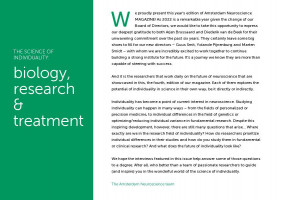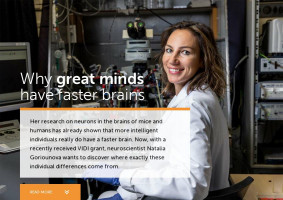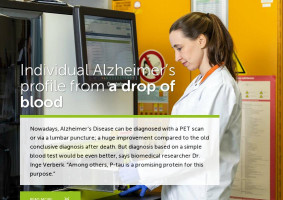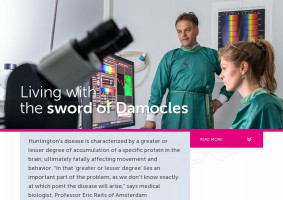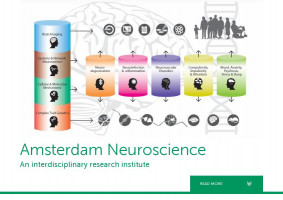“With multiple sclerosis, there’s quite a difference from person to person how the network in the brain is affected,” says Menno Schoonheim, a neuroscientist in the Department of Anatomy and Neurosciences at Amsterdam UMC. “People can look alike on an MRI in terms of inflammation, yet differ enormously clinically. I believe that the degree of disruption of a person’s ‘brain network’ is the determining factor. In some people, the network remains protected longer than others.”
More branching, fewer symptoms
In MS, it has long been known that people with a higher level of education seem more protected from severe clinical symptoms of the disease. “This is what we call cognitive reserve,” Schoonheim explains. “It provides a level of resilience, to compensate for damage, so that areas can continue to communicate well, possibly through maintaining a well-branched network.”
That degree of branching and brain communication can be imaged in research, using advanced MRI, the neuroscientist says. “We really see MS as a network disease. When people have deteriorated severely because of MS, we see a loss of network branching and overloaded distribution centers. Buffer capacity fails and the network becomes rigid and slow. We call this the collapse of the network.”
The thalamus as a railroad junction
Schoonheim recently received a VIDI grant of 800,000 euros for his project ‘The collapsing brain in MS’, in which he aims to map and predict the course of MS in all phases of the disease, with cohorts from MS centers around the world. “In this project, everything is centered around the network: When do we see the first signs of network disruption or even a ‘collapse’, and which distribution centers in the brain are crucial to monitor this?” he explains. “My hypothesis is that the shrinkage of one specific brain region, the thalamus, is a good predictor of more severe symptoms. If you think of the brain as an intricately branched railroad network, then such a network can better cope with a certain amount of proverbial ‘wet leaves on the track’ if there are more alternative routes and good communication. But if a crucial station such as Utrecht Central becomes too congested or something stops working there, then the railway managers have a serious problem. Similarly, a person with MS has a more serious problem if the thalamus becomes too severely damaged.”
Prognosis and treatment options
Whereas Schoonheim often uses extremely sophisticated scans in his fundamental research, he envisions a future where people can be helped in everyday clinical practice based on a ‘regular’ MRI. “My theory is that in the clinic we can monitor the MS network largely based on the size of the thalamus,” he says. “We can measure its volume on routine clinical MRI scans and include it in the complete picture of – for example – current disease activity, sex, education and disease history. At the end of the project, I want to be able to make a good individual estimate of the prognosis of a specific person with MS, which hopefully can then be used by the neurologist for an individualized treatment plan.”
Big data
To reach that goal, Schoonheim seeks the power of big data. “In ‘The collapsing brain in MS’, we really need big data in the strict sense of the word,” he says. “To that end, it helps enormously that the MS Center of Amsterdam UMC has put MRI research, and research on neural networks in particular, on the forefront of the international agenda. As a result, many international colleagues have already pledged their cooperation. Ultimately, we may be able to use this research to help remove some of that agonizing uncertainty that characterizes MS. But I think eventually this concept could also be useful in the future for other conditions, such as Parkinson’s disease, dementia or psychiatric syndromes.”
Building bridges
According to Schoonheim, this research is an ultimate example of how great things can happen at the junction where research technology and the clinic meet. “This project is all about the data that is collected in the daily practice of the clinic, combined with innovative insights from fundamental research. For me, that’s where the added value of Amsterdam Neuroscience becomes apparent.”
Photography: Marieke de Lorijn

